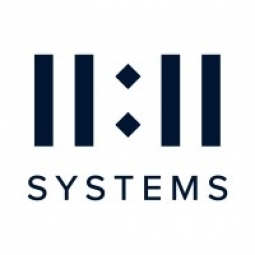公司规模
SME
地区
- America
- Asia
- Europe
国家
- United States
- Hong Kong
- United Kingdom
产品
- Brickstream 2200
- BehaviorIQ™ software
- iland 10Ghz Managed Resource Cloud package
技术栈
- VMware
- Cloud Infrastructure
实施规模
- Enterprise-wide Deployment
影响指标
- Cost Savings
- Productivity Improvements
技术
- 基础设施即服务 (IaaS) - 云计算
- 分析与建模 - 实时分析
适用行业
- 零售
- 安全与公共安全
适用功能
- 销售与市场营销
- 商业运营
用例
- 预测性维护
- 边缘计算与边缘智能
- 实时定位系统 (RTLS)
服务
- 云规划/设计/实施服务
- 系统集成
关于客户
Brickstream, with global headquarters in Atlanta, GA and offices based in the United Kingdom and Hong Kong, is an industry leader in stereo vision appliances. Founded in 2001, the company is committed to helping businesses effectively measure customer behavior in a brick and mortar setting, much like clickstream analytics provide in a software setting. Using cutting-edge technology to produce numerous in-store metrics, Brickstream quickly became a market leader in customer behavior analysis. The company’s flagship product, the Brickstream 2200, is a plug-and-play stereo video analytics appliance with its BehaviorIQ™ software built into the device. With over 10,000 devices deployed worldwide, the technology delivers counting, service, queuing, marketing, and other metrics for applications in retail, security, banking, transportation, and many other industries. Brickstream’s products and services are distributed via strategic channel partnerships across the globe. Its primary target market includes businesses wanting to learn about their customers’ behavior.
挑战
Brickstream’s infrastructure included physical hardware that was managed out of a colocation facility in Atlanta. The company was responsible for procuring hardware from a variety of vendors, applying critical maintenance updates, and performing hardware upgrades and repairs. This led to recurring warranties and maintenance fees which began to burden Brickstream. The company started considering moving to a virtual environment to alleviate the burden of managing a physical infrastructure. However, migrating from a traditional colocation facility to a VMware-leveraged virtual environment was a daunting task, especially for a relatively small company with limited IT resources. Another concern was cost. Brickstream had experienced firsthand the long-term pitfalls associated with buying and maintaining physical hardware. To utilize its IT dollars more effectively, the company realized that migrating to the cloud was the obvious choice.
解决方案
Brickstream evaluated five cloud providers including iland. iland’s key differentiator was its ability to provide a flexible, customizable solution that met the specific requirements of Brickstream. Brickstream selected an iland 10Ghz Managed Resource Cloud package that has allowed it to eliminate underutilized hardware, make efficient use of the new infrastructure and save $50,000 in hardware expenses. From the beginning, iland’s engineering team worked diligently to deploy Brickstream’s virtual environment. Scheduled discussions provided a Q & A format for Brickstream to get their questions answered. All questions were answered with obvious expertise. The transition from physical to virtual is expected to support the natural projected growth of the business. The physical infrastructure Brickstream managed prior to deployment was limited and naturally static, and only allowed for a certain percentage of growth.
运营影响
数量效益

Case Study missing?
Start adding your own!
Register with your work email and create a new case study profile for your business.
相关案例.

Case Study
Improving Production Line Efficiency with Ethernet Micro RTU Controller
Moxa was asked to provide a connectivity solution for one of the world's leading cosmetics companies. This multinational corporation, with retail presence in 130 countries, 23 global braches, and over 66,000 employees, sought to improve the efficiency of their production process by migrating from manual monitoring to an automatic productivity monitoring system. The production line was being monitored by ABB Real-TPI, a factory information system that offers data collection and analysis to improve plant efficiency. Due to software limitations, the customer needed an OPC server and a corresponding I/O solution to collect data from additional sensor devices for the Real-TPI system. The goal is to enable the factory information system to more thoroughly collect data from every corner of the production line. This will improve its ability to measure Overall Equipment Effectiveness (OEE) and translate into increased production efficiencies. System Requirements • Instant status updates while still consuming minimal bandwidth to relieve strain on limited factory networks • Interoperable with ABB Real-TPI • Small form factor appropriate for deployment where space is scarce • Remote software management and configuration to simplify operations

Case Study
Smart City Public Safety
Amyx+ worked with a local government authority to develop an Internet of Things-enabled public safety strategy. In the current state, vigilance meant manually scanning through potentially hundreds of analog surveillance videos feeds. Manual, costly and ineffective, the local agency desired to transition from analog to digital CCTV, apply computer vision and other technologies to automatically detect potential crime in progress, expedite and streamline emergency calls and integrate with personal wearables to ensure the safety of their citizens.

Case Study
Digital Retail Security Solutions
Sennco wanted to help its retail customers increase sales and profits by developing an innovative alarm system as opposed to conventional connected alarms that are permanently tethered to display products. These traditional security systems were cumbersome and intrusive to the customer shopping experience. Additionally, they provided no useful data or analytics.

Case Study
How Sirqul’s IoT Platform is Crafting Carrefour’s New In-Store Experiences
Carrefour Taiwan’s goal is to be completely digital by end of 2018. Out-dated manual methods for analysis and assumptions limited Carrefour’s ability to change the customer experience and were void of real-time decision-making capabilities. Rather than relying solely on sales data, assumptions, and disparate systems, Carrefour Taiwan’s CEO led an initiative to find a connected IoT solution that could give the team the ability to make real-time changes and more informed decisions. Prior to implementing, Carrefour struggled to address their conversion rates and did not have the proper insights into the customer decision-making process nor how to make an immediate impact without losing customer confidence.

Case Study
Ensures Cold Milk in Your Supermarket
As of 2014, AK-Centralen has over 1,500 Danish supermarkets equipped, and utilizes 16 operators, and is open 24 hours a day, 365 days a year. AK-Centralen needed the ability to monitor the cooling alarms from around the country, 24 hours a day, 365 days a year. Each and every time the door to a milk cooler or a freezer does not close properly, an alarm goes off on a computer screen in a control building in southwestern Odense. This type of alarm will go off approximately 140,000 times per year, equating to roughly 400 alarms in a 24-hour period. Should an alarm go off, then there is only a limited amount of time to act before dairy products or frozen pizza must be disposed of, and this type of waste can quickly start to cost a supermarket a great deal of money.








